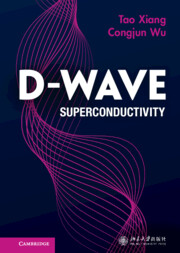Book contents
- Frontmatter
- Contents
- Preface
- Abbreviations
- 1 Introduction to Superconductivity
- 2 Microscopic Models for High Temperature Superconductors
- 3 Basic Properties of d-wave Superconductors
- 4 Quasiparticle Excitation Spectra
- 5 Tunneling Effect
- 6 Josephson Effect
- 7 Single Impurity Scattering
- 8 Many-Impurity Scattering
- 9 Superfluid Response
- 10 Optical and Thermal Conductivities
- 11 Raman Spectroscopy
- 12 Nuclear Magnetic Resonance
- 13 Neutron Scattering Spectroscopy
- 14 Mixed State
- Appendix A Bogoliubov Transformation
- Appendix B Hohenberg Theorem
- Appendix C Degenerate Perturbation Theory
- Appendix D Anderson Theorem
- Appendix E Sommerfeld Expansion
- Appendix F Single-Particle Green’s Function
- Appendix G Linear Response Theory
- References
- Index
11 - Raman Spectroscopy
Published online by Cambridge University Press: 17 June 2022
- Frontmatter
- Contents
- Preface
- Abbreviations
- 1 Introduction to Superconductivity
- 2 Microscopic Models for High Temperature Superconductors
- 3 Basic Properties of d-wave Superconductors
- 4 Quasiparticle Excitation Spectra
- 5 Tunneling Effect
- 6 Josephson Effect
- 7 Single Impurity Scattering
- 8 Many-Impurity Scattering
- 9 Superfluid Response
- 10 Optical and Thermal Conductivities
- 11 Raman Spectroscopy
- 12 Nuclear Magnetic Resonance
- 13 Neutron Scattering Spectroscopy
- 14 Mixed State
- Appendix A Bogoliubov Transformation
- Appendix B Hohenberg Theorem
- Appendix C Degenerate Perturbation Theory
- Appendix D Anderson Theorem
- Appendix E Sommerfeld Expansion
- Appendix F Single-Particle Green’s Function
- Appendix G Linear Response Theory
- References
- Index
Summary
Chapter 11 discusses the properties of Raman response functions in d-wave superconductors. It is shown that the vertex function of high-symmetric A1g mode is strongly modified by the screening effect of the fluctuating charges to the long-range Coulomb interaction. Unlike in an s-wave superconductor, the Raman spectral functions behave quite differently in different symmetric channels in a d-wave superconductor. Particularly, the B2g-mode shows a characteristic peak at a higher frequency than that of the B2g mode. The behavior of the Raman response function in a two-band system, such as the electron-doped cuprate superconductors, is also discussed.
- Type
- Chapter
- Information
- D-wave Superconductivity , pp. 268 - 283Publisher: Cambridge University PressPrint publication year: 2022

